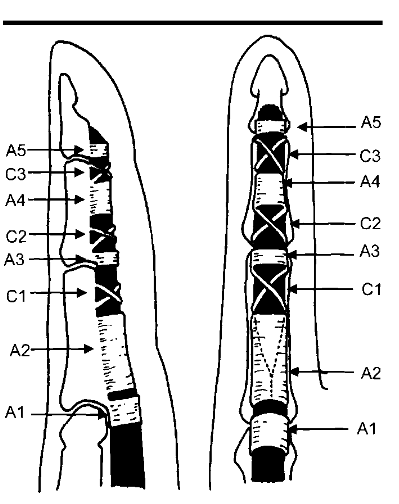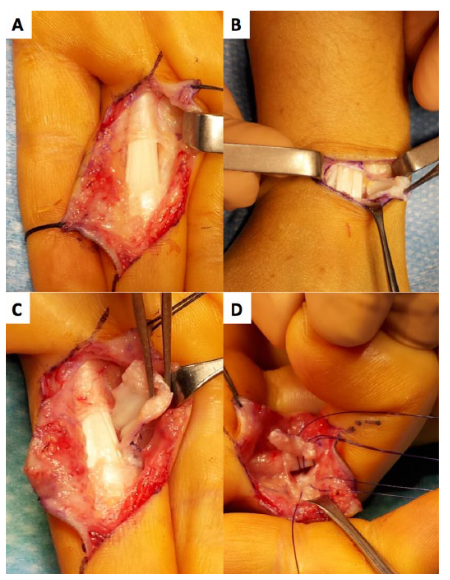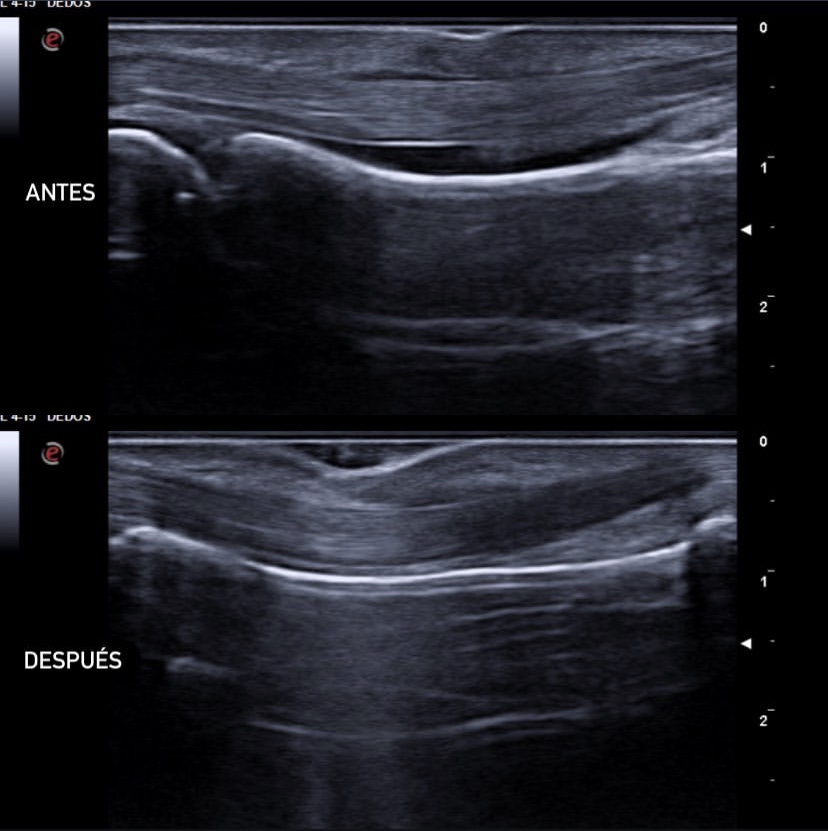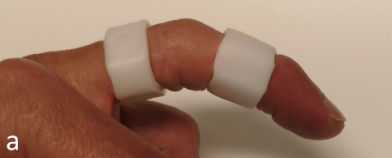WHAT ARE PULLEYS?
WHAT IS THEIR MOST COMMON INJURY?
HOW DO I KNOW IF I HAVE A DAMAGED PULLEY?
TREATMENT
¿WHAT ARE PULLEYS?
The normal flexion of the fingers is a complex fine motor action that requires the integrity and organization of a series of delicate structures centered around the flexor tendon. One of the most important structures is the pulley system. Pulleys are thin fibrous ligaments that hold the flexor tendons against the phalanges during finger flexion. Their normal representation consists of annular pulleys (A1, A2, A3, A4, A5) and cruciate pulleys (C1, C2, and C3). Study results have shown that the A2 pulley is the strongest, followed by A1 and A4 pulleys. The injury pattern follows a progressive and predictable sequence: the tear begins at the distal part of the A2 pulley and progresses from a partial tear to a complete tear, followed by involvement of A3 and A4 (1).

WHAT IS THE MOST COMMON INJURY?
The “climber’s finger” refers to a variety of digital injuries due to local stress from climbing activities affecting the joints and digital pulleys. They are the most frequently injured structures in the sport of climbing, accounting for a total of 30% of injuries in this sport, with A2 and A4 pulleys being the most affected in 2/3 of cases. Climbers typically present with pain and tenderness on the palmar aspect of the finger, and an audible “pop” at the time of injury may indicate a ruptured finger pulley. Its rupture leads to an immediate loss of strength, pressure on the tendon, and consequently, loss of function (2).

HOW DO I KNOW IF I HAVE A DAMAGED PULLEY?
Currently, the best tool for diagnosing pulley rupture is ultrasound. Ultrasound confirms the diagnosis of A2 and A4 pulley rupture when the separation between the tendon and bone is greater than 2mm. When the finger is flexed, and a discreet bowstring appears from the tendon, it may indicate the rupture of several pulleys (A2, A3, and A4) and is called “bowstringing.” Climbers with chronic degenerative changes in annular pulleys have been found to have a separation greater than 2 mm in the absence of rupture, and in such cases, surgical treatment may be necessary (3,4).

TREATMENT
Currently, the main treatment should be conservative and carried out with individualized thermoplastic rings, which should be initiated immediately after the injury, provided that the distance between the tendon and bone can be satisfactorily reduced. It should be worn throughout the day for a period of 6 to 8 weeks, and an ultrasound check of the pulley is mandatory. Late diagnosis is associated with less favorable outcomes for the injury (5,6).

BIBLIOGRAPHY
1. Hauger O, Chung CB, Lektrakul N, Botte MJ, Trudell D, Boutin RD, et al. Pulley System in the Fingers: Normal Anatomy and Simulated Lesions in Cadavers at MR Imaging, CT, and US with and without Contrast Material Distention of the Tendon Sheath. Radiology .2000;217(1):201-12. Disponible en: http://pubs.rsna.org/doi/10.1148/radiology.217.1.r00oc40201
2. Bianchi WS, Almusa E, Chick G, Bianchi E. Ultrasound in wrist and hand sport injuries. SPORTS Med J.
3. Schöffl I, Hugel A, Schöffl V, Rascher W, Jüngert J. Diagnosis of Complex Pulley Ruptures Using Ultrasound in Cadaver Models. Ultrasound Med Biol.2017;43(3):662-9. Disponible en: https://linkinghub.elsevier.com/retrieve/pii/S0301562916303635
4. Berrigan W, White W, Cipriano K, Wickstrom J, Smith J, Hager N. Diagnostic Imaging of A2 Pulley Injuries: A Review of the Literature. J Ultrasound Med. 2021;jum.15796. Disponible en: https://onlinelibrary.wiley.com/doi/10.1002/jum.15796
5. Scheibler AG, Janig C, Schweizer A. Primarily conservative treatment for triple (A2-A3-A4) finger flexor tendon pulley disruption. Hand Surg Rehabil. 2021;40(3):314-8. Disponible en: https://linkinghub.elsevier.com/retrieve/pii/S2468122921000876
6. SchÖFFL VR, Einwag F, Strecker W, SchÖFFL I. Strength Measurement and Clinical Outcome after Pulley Ruptures in Climbers. Med Sci Sports Exerc 2006;38(4):637-43. Disponible en: https://journals.lww.com/00005768-200604000-00005